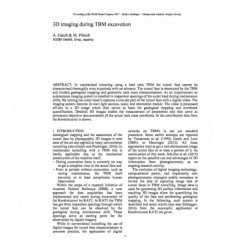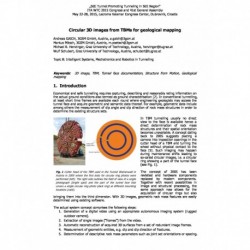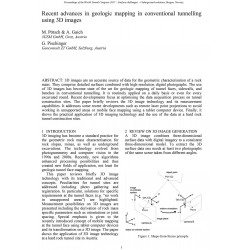No document
Search & filter
Search for a publication
Search & filter
List of products by author: A. Gaich
-
3D imaging during TBM excavation
Abstract: In mechanised tunneling using a hard rock TBM the tunnel face cannot be characterised thoroughly even at periods with no advance. The tunnel face is obstructed by the TBM and hinders geological mapping and geometric rock mass characterisation. As an improvement an autonomous imaging system is installed in inspection openings of the cutter head during maintenance shifts....
0,00 € -
Circular 3D images from TBMs for geological mapping
Abstract: Economical and safe tunnelling requires capturing, describing and reasonably rating information on the actual ground conditions also termed as ground characterisation In conventional tunnelling, at least short time frames are available each round where engineering geologists may access the tunnel face and acquire geometric and semantic data thereof. For example, geometric data include among...
0,00 € -
Drone Based Deformation Monitoring at the Tunnel Project Zentrum am Berg
Abstract: In the contribution a new drone based deformation monitoring system is presented that is currently developed by Geodata Group, 3GSM GmbH and Georesearch Forschungsgesellschaft mbH in the funded EUREKA research project Defdrone_3D and practically tested at the recently started Austrian tunnel project Zentrum am Berg (ZaB). The system is designed for monitoring the 3D displacements of structures...
0,00 € -
Recent advances in geologic mapping in conventional tunnelling using 3D images
Abstract: 3D images are an accurate source of data for the geometric characterisation of a rock mass. They comprise detailed surfaces combined with high-resolution digital photographs. The use of 3D images has become state of the art for geologic mapping of tunnel faces, sidewalls, and benches in conventional tunnelling. It is routinely applied on a daily basis or even for every excavated round. Recent...
0,00 €




